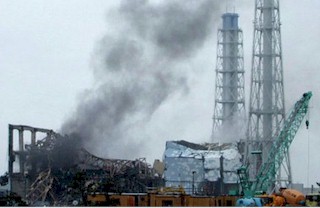In March 2011, a tsunami struck the coast of Japan that destroyed three nuclear reactors and severely damaged a fourth nuclear reactor at the Fukushima Daiichi site. The radioactive waste from the plant has been bleeding into the neighboring forests and Pacific Ocean for over four years. TEPCO, the company that oversees the plant, has consistently failed to contain the disaster. Hundreds of tons of water are poured into the reactors each day in an effort to keep nuclear reactors cool. Now, TEPCO has admitted that the buildings at the Fukushima site are sinking and will become more unstable with time.
TEPCO recently issued a report that highlights the depths to which the reactor turbine buildings have plummeted. The report reads that the Reactor 1 building sank by 730 mm, Reactor 2 by 725 mm, Reactor 3 by 710 mm, and Reactor 4 by 712 mm. In addition, the reference point has sunk by 709 mm. The report also admits that the company knew that the Fukushima plant has been sinking irregularly for quite some time. Nevertheless, TEPCO has yet to report the height of the turbine buildings above sea level.(1)
